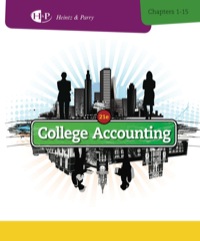



Ms. Gleason, an unmarried taxpayer, had the following income items: Salary Net income from a rental house $ 41,200 3,410 Ms. Gleason has a four-year-old son who attends a day care center while she is at work. Ms. Gleason paid $4,190 to this center and has no itemized deductions. Required: Compute Child Credit, Dependent Credit, and her income tax after these two credits. Assume the taxable year is 2021. Use Individual Tax Rate Schedules and Standard Deduction Table. (Round your intermediate computations to the nearest whole dollar amount.) Amount Child credit Dependent credit Income tax Individual Tax Rate Schedules Married Filing Jointly and Surviving Spouse If taxable income is Not over $19,900 Over $19,900 but not over $81,050 Over $81,050 but not over $172,750 Over $172,750 but not over $329,850 Over $329,850 but not over $418,850 Over $418,850 but not over $628,300 Over $628,300 The tax is 10% of taxable income $1,990.00 + 12% of excess over $19,900 $9,328.00 + 22% of excess over $81,050 $29,502.00 + 24% of excess over $172,750 $67,206.00 + 32% of excess over $329,850 $95,686.00 + 35% of excess over $418,850 $168,993.50 + 37% of excess over $628,300 Married Filing Separately If taxable income is Not over $9,950 Over $9,950 but not over $40,525 Over $40,525 but not over $86,375 Over $86,375 but not over $164,925 Over $164,925 but not over $209,425 Over $209,425 but not over $314,150 Over $314,150 The tax is 10% of taxable income $995.00 + 12% of excess over $9,950 $4,664.00 + 22% of excess over $40,525 $14,751.00 + 24% of excess over $86,375 $33,603.00 + 32% of excess over $164,925 $47,843.00 + 35% of excess over $209,425 $84,496.75 + 37% of excess over $314,150 Head of Household If taxable income is Not over $14,200 Over $14,200 but not over $54,200 Over $54,200 but not over $86,350 Over $86,350 but not over $164,900 Over $164,900 but not over $209,400 Over $209,400 but not over $523,600 Over $523,600 The tax is 10% of taxable income $1,420.00 + 12% of excess over $14,200 $6,220.00 + 22% of excess over $54,200 $13,293.00 + 24% of excess over $86,350 $32,145.00 + 32% of excess over $164,900 $46,385.00 + 35% of excess over $209,400 $156,355.00 + 37% of excess over $523,600 Single If taxable income is Not over $9,950 Over $9,950 but not over $40,525 Over $40,525 but not over $86,375 Over $86,375 but not over $164,925 Over $164,925 but not over $209,450 Over $209,450 but not over $523,600 Over $523,600 The tax is 10% of taxable income $995.00 + 12% of excess over $9,950 $4,664.00 + 22% of excess over $40,525 $14,751.00 + 24% of excess over $86,375 $33,603.00 + 32% of excess over $164,925 $47,843.00 + 35% of excess over $209,425 $157,804.25 + 37% of excess over $523,600 Married filing jointly and surviving spouses Married filing separately Head of household Single $25,100 12,550 18,800 12,550










